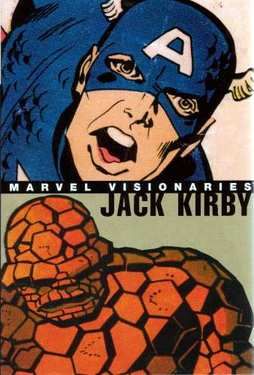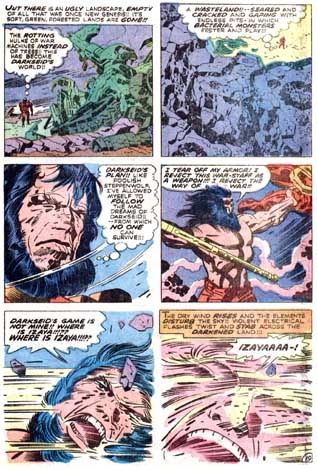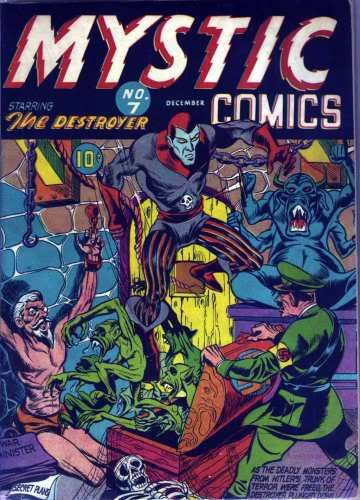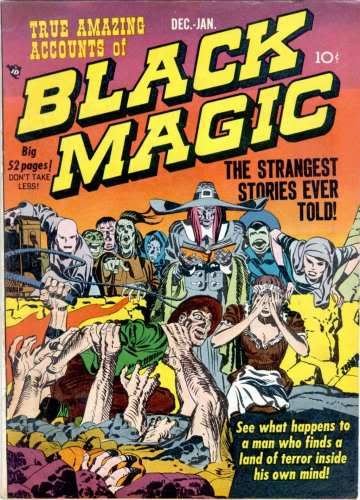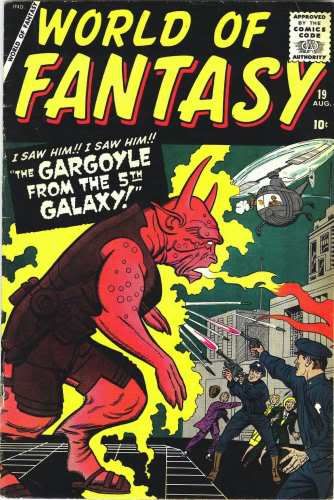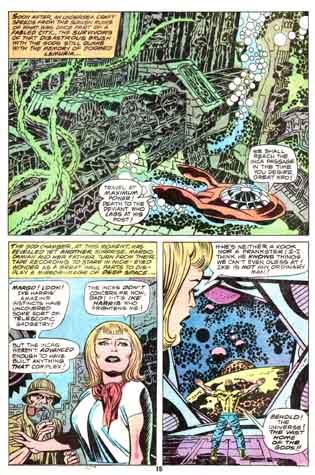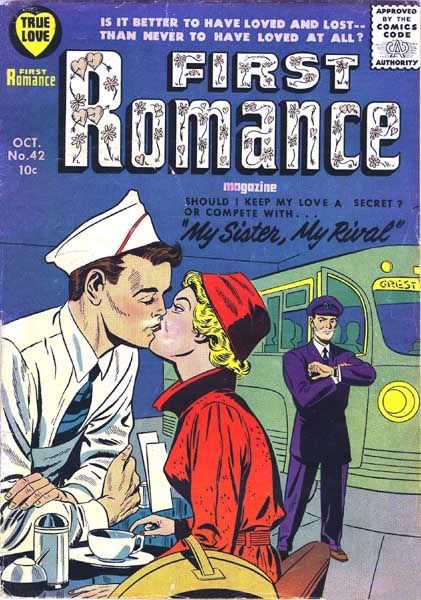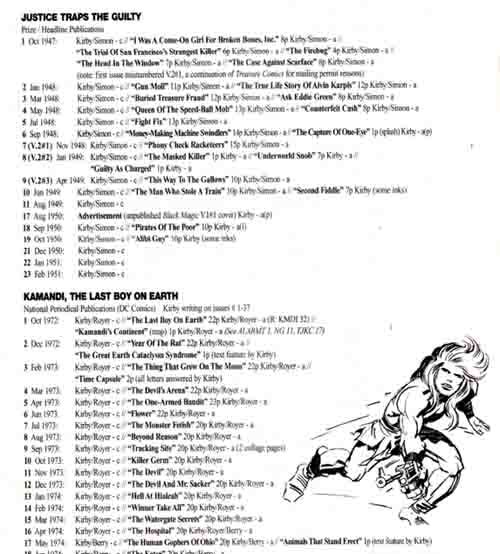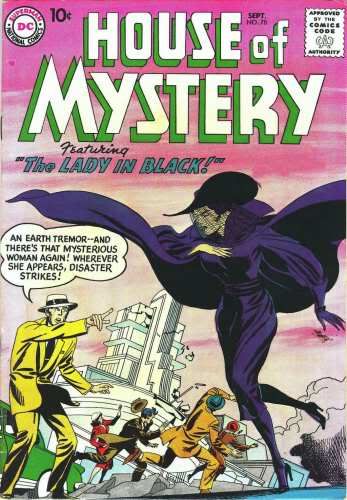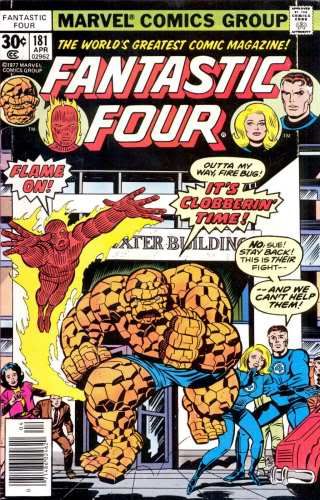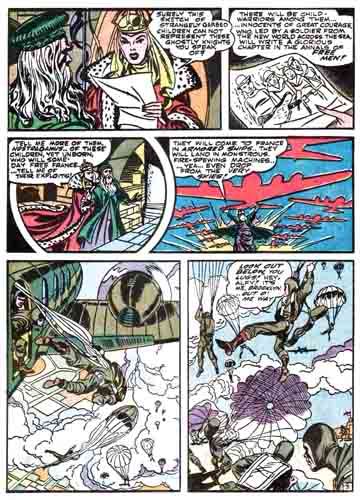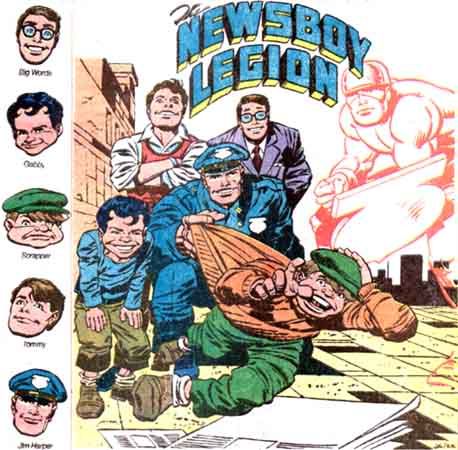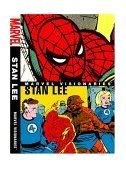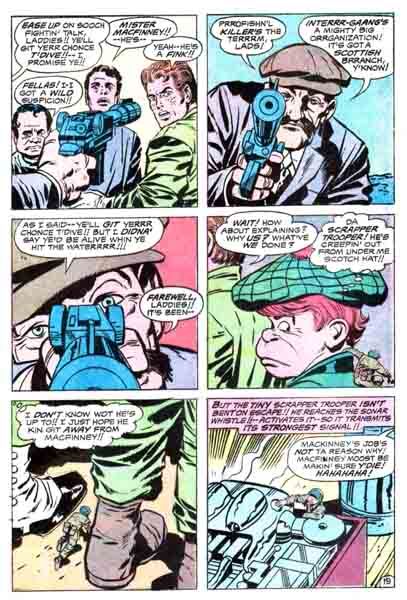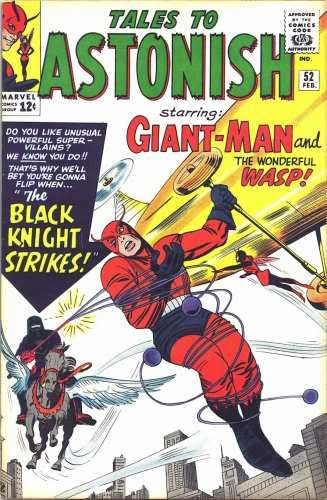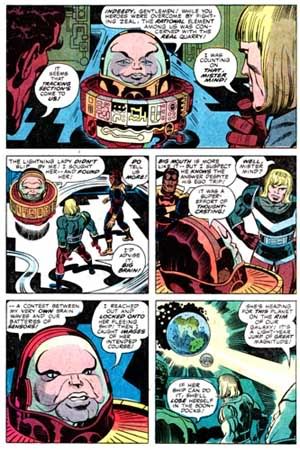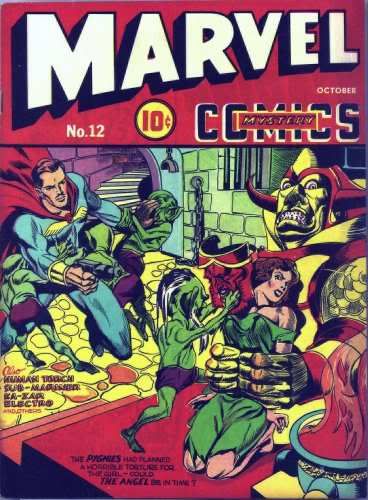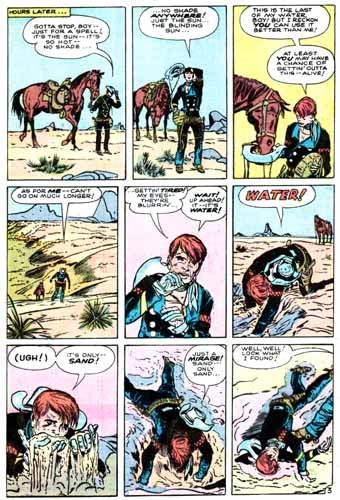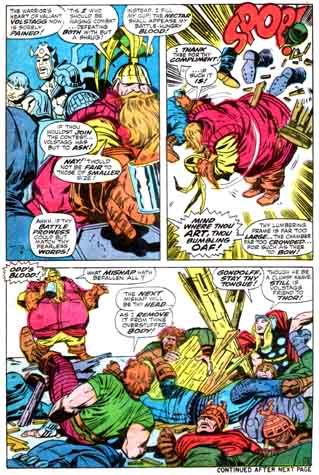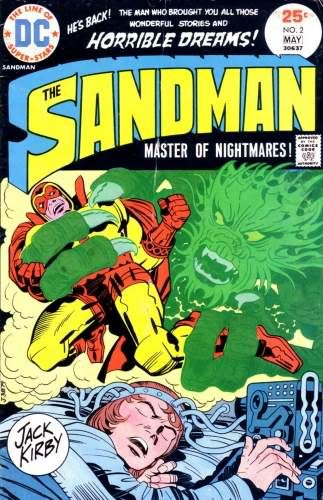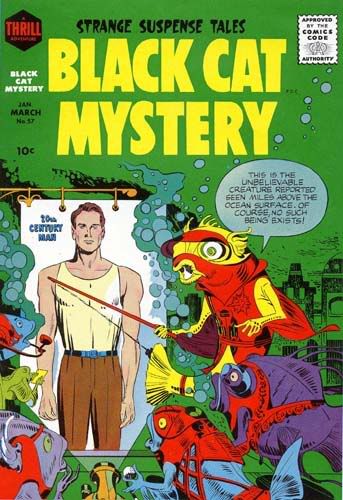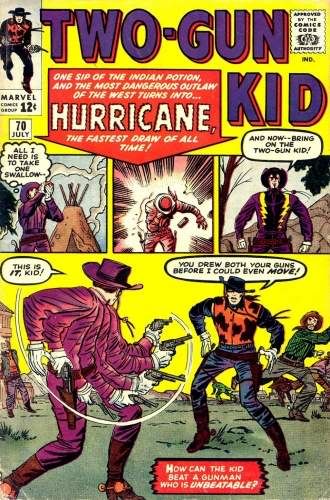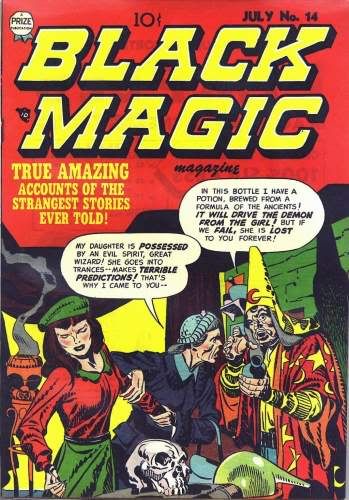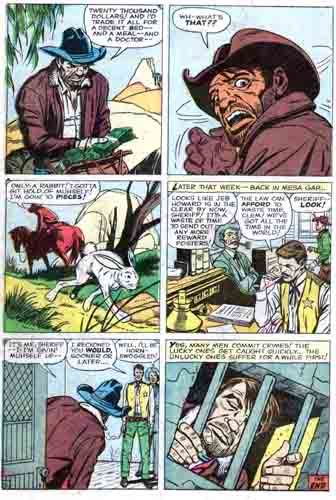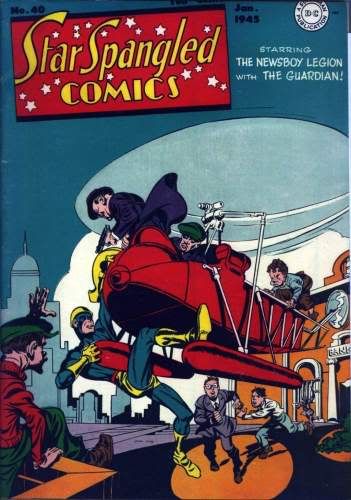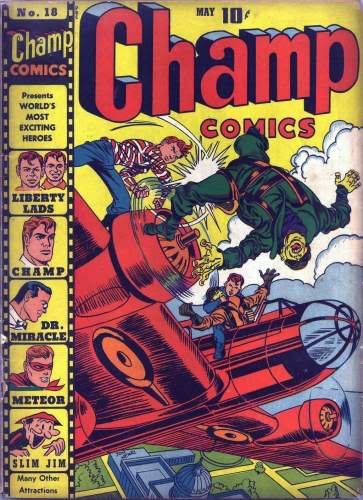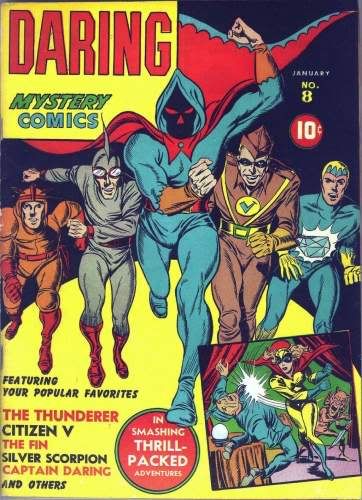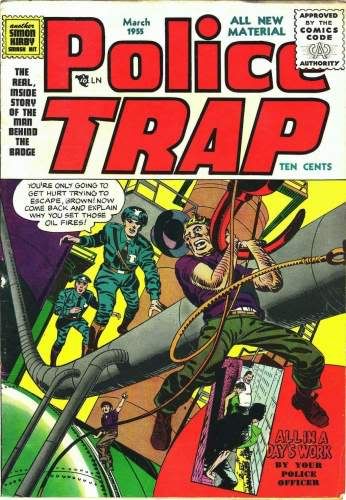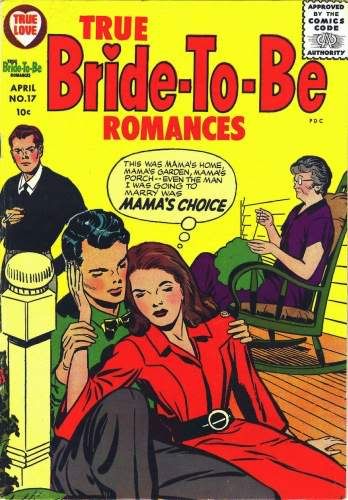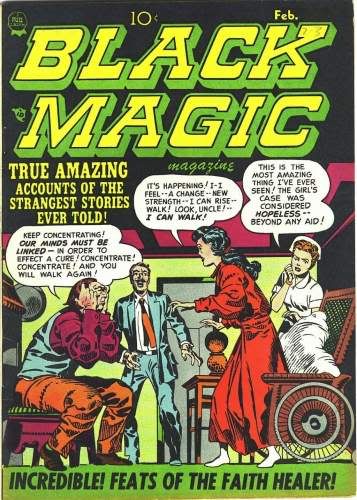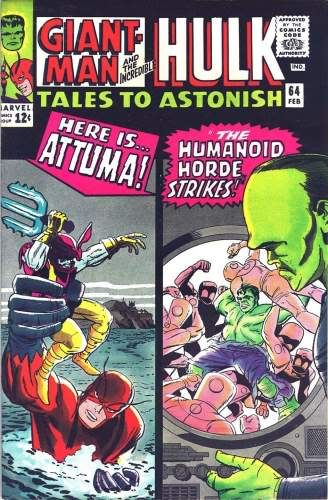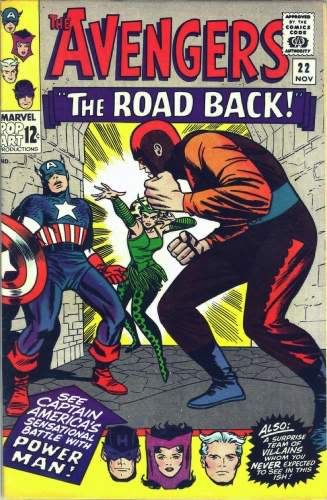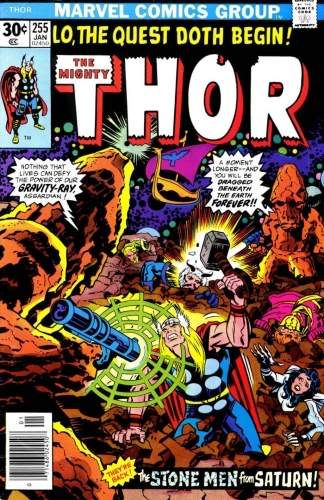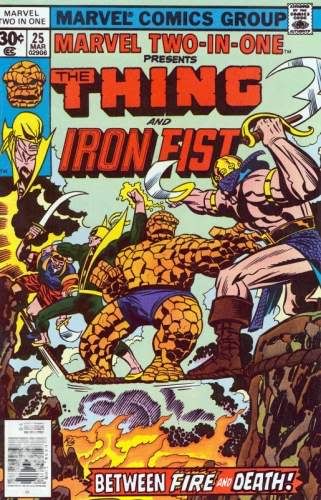
Only on-line place I've seen it offered is Last Gasp
More work from Kirby in the 1940s and 1950s, about 160 pages in crisp black and white. A good mix of almost all genres except super-heroes (and if you want Kirby super-heroes there are a few other books available), with crime, romance, war, western, funny animal, science-fiction and fantasy.
The cover is a nice sword-fight scene from the cover of WIN-A-PRIZE #1.
The book opens with four pulp illustrations from MARVEL STORIES in 1940. They're pretty good early work, I think the first one, "The Thought-World Monsters" is the strongest
"Gang War" - REAL CLUE CRIME V.2 #7
A gangster story about 1920s Illinois, where a rivalry escalates to increasing violence until the police finally take a hand. Some very nice scenes of gang violence, very cinematic.
"The Mad White God of Palm Island" - REAL CLUE CRIME V.2 #7
Previously printed in BURIED TREASURE #1, although without the greytones this time, which is an improvement. Still some nice action scenes, though a bit of a weak story.
"My Problem Date" - MY DATE #2
One of the "Swifty Chase" stories from the short lived title, which led directly to the long running romance line. This series is sort of half-way between the teen humour series that Archie was already doing a the time and the romance books, this time featuring Swifty designing a flying car. So not so realistic, but lots of fun.
"The Head in the Window" - JUSTICE TRAPS THE GUILTY #1
A "true" crime story, with a wonderfully gory splash panel of a severed head, this story set in 1890s New York lets Kirby take a full page to lovingly draw the details of a bomb blowing up in a Wall Street office building.
"Lockjaw Goes to College" - PUNCH & JUDY V.3 #1
One of Kirby's forays into funny animals, Lockjaw is a talking alligator who has a companion in the diminutive Professor. His most common schtick is that in fights he grabs the Professor and uses him as a club, which is a lot funnier than it should be. In this story, the last of four Lockjaw stories, Lockjaw goes to university, joins a fraternity (one member looks like a disguised Goozlebobber from CAPTAIN VICTORY almost forty years later). A good vehicle for slapstick humour.
"Earl the Rich Rabbit" - PUNCH & JUDY V.3 #1
This was a feature taken over by S&K from another artist, so it looks different from most of their stuff, much more open without the heavy inks. The basic gimmick is a wealthy rabbit living his life with poor jealous human neighbours trying, and failing, to get the better of him.
"The Bobby-Sox Bandit Queen" - HEADLINE #27
More "true" crime (I'm always tempted to see if there's ever any non-comic book record of these true cases), this time featuring a sixteen year old girl who gets caught up in a life of crime with her older boyfriend, leading to a cross-country chase. This is a nice twisting story with lots of similarities to the romance books, which were starting at the same time.
"Boy Crazy" - YOUNG ROMANCE #2
Great early romance story, this one featuring a teen-ager competing with her aunt and learning a thing or two about maturity. Nice different kind of ending to the standard romance for this one.
"Face in the Storm" - AIRBOY V.4 #10
A "Link Thorne, Flying Fool" story, the feature was basically a variation on Caniff's Steve Canyon, with a post-war civilian flyer, right down to the exotic assistant (with the rather odd name Wing-Ding). In this story, Link tells about a wartime experience where his plane crashed in China, and he was cared for by a mysterious woman. What's most interesting is that the name of the woman is Auralie, which Fourth World fans will recognize as the name of one of Scott Free's fellow disciples of Himon on Apokolips 25 years later. I'm sure that means something.
"Ask Eddie Green, Consultant to Crime" - JUSTICE TRAPS THE GUILTY #3
More crime, this one featuring a jailbird who gets involved in planning crimes for others, in exchange for a piece of the action. Of course, he finds that crime does not pay, justice always traps the guilty and all those important lessons. I always hope in one of these stories we'd find out that crime does pay. I can think of one EC story that is sort of like that, with the girl framing her mother.
"Mama's Boy" - YOUNG ROMANCE #10
"Too Wise for Romance" - YOUNG LOVE #2
A few more romances, with the usual barriers popping up in the way to true love. These stories are great showcases for Kirby's work, with lots of opportunities to draw different settings and types of people (although admittedly the leads do tend to be the "Kirby hero" standard types more often than not).
"Captain Thayer's War" - REAL CLUE CRIME V.4 #4
Apparently only inked by Kirby, which is unusual, the penciller isn't identified. The Kirby comes through pretty clearly, with the same look as most. A fun allegedly true story about a late-1800s con-man trying to set up his own country.
"I Talked With My Dead Wife" - STRANGE WORLD OF YOUR DREAMS #1
"The Girl in the Grave" - STRANGE WORLD OF YOUR DREAMS #2
A pair of stories featuring dream analyst Richard Temple. Very odd concept for a series, but the dream imagery concept allowed them to do some interesting art, and the surrounding story is the usual sold work.
"Mine Field" - BATTLEGROUND #14
"The Vengeance of Growling Bear" - QUICK TRIGGER WESTERN #16
A short war and short western story from the brief stint at Marvel/Atlas that Kirby had in 1956/1957, when he also did 3 issues of YELLOW CLAW. The war one is really good, a WWII story about a frightened young private who comes across Germans laying a minefield to trap his compatriots. The western is also nice, with an Indian chief trying to prevent his tribe from being drawn into a war.
"The Cadmus Seed" - ALARMING TALES #1
"The Woman Who Discovered America 67 Years Before Columbus" - BLACK CAT MYSTIC #60
And finishing off with a pair of 1957 stories published by Harvey. "The Cadmus Seed" is notable for a wonky early use of cloning as a story concept, which Kirby would return to with JIMMY OLSEN (to the point that later writers borrowed the "Cadmus" name for the DNA Project, since I don't think Kirby used the Cadmus name himself in JIMMY OLSEN). "The Woman..." is another one of those "true" stories, this one about a Spanish woman who apparently described visions of South American native cultures long before Europeans made the trip across. Hey, any excuse to see Kirby draw Conquistadors and Quetzlcoatl are cool with me.
There are also two photos, one frontispiece of Simon and Kirby at a desk, and a colour photo on the back of Kirby and, I assume, one of his daughters in a swimming pool. Very cool.
A great collection. No real quibbles with the selection of stories or the reproduction. The only problem is the lack of any supporting material, with only a contents page with story title, original issue and date. Not even the publisher or who might have inked the stories. It's odd, but Theakston's books started off having too much supplemental material, hit a healthy medium for a while, and have now whittled down to the bare minimum.

